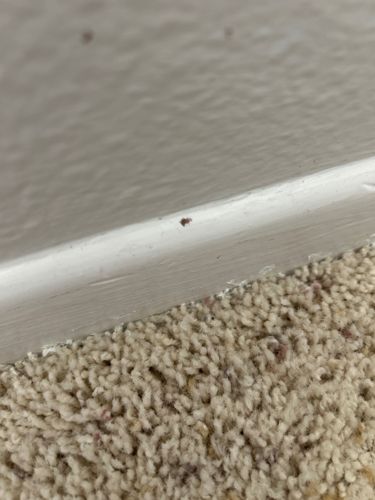Flea
Scientific Name: Siphonaptera
Order & Family: Order: Siphonaptera
Size: 1.5 to 3.3 mm (about 1/16 to 1/8 inch)

Natural Habitat
Adult fleas live as parasites on warm-blooded animals like cats, dogs, and humans. Eggs, larvae, and pupae are found in the host's environment, typically in carpets, pet bedding, upholstery, and cracks in flooring.
Diet & Feeding
Adults are hematophagous, feeding exclusively on the blood of their hosts. Larvae feed on organic debris found in carpets and bedding, particularly the dried-blood feces of adult fleas, often called 'flea dirt'.
Behavior Patterns
Fleas are wingless insects with laterally compressed bodies, allowing them to move easily through fur or hair. They are renowned for their powerful legs, which enable them to jump significant distances to access a host. The life cycle consists of egg, larva, pupa, and adult. The pupal stage can remain dormant for months, only emerging when it detects vibrations, heat, or carbon dioxide from a potential host.
Risks & Benefits
Risks: Flea bites are itchy and can cause allergic reactions (flea allergy dermatitis) in both pets and people. They are vectors for diseases such as murine typhus and can transmit tapeworms to pets. They are considered a major nuisance pest. Benefits: Fleas have no known benefits in a domestic environment.
Identified on: 11/8/2025